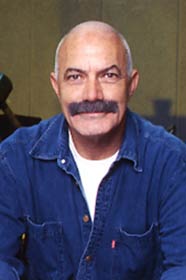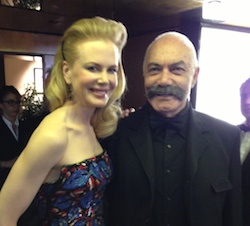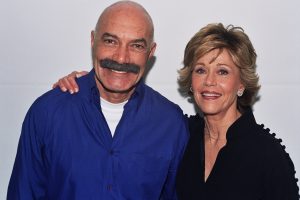A consistently scary monster movie, Ridley Scott’s Alien launched a whole cycle of sci-fi-horror movies. Among its many various effects was the introduction to the big screen a gifted actress, Sigourney Weaver, who was cast in a role typically assigned to men, Officer Ripley.
Grade: A (***** out of *****)
| Alien | |
|---|---|

Theatrical release poster by Philip Gips
|
|
Most of the yarn is set aboard Nostromo, an industrial spaceship that lands on the surface of a mysterious planet. To their horror, the crew members discover a crashed spaceship there. Suddenly, a strange egg disgorges a multi-legged life-form that then latches onto the face of crewman Kane (John Hurt); unconscious, Kane is brought back to the ship and the horror begins. The bizarre creature resists all efforts to dislodge it. While the crew believes it disappears, the creature turns out dead later as Kane revives.
The Nostromo takes off and things seem to go back to normal. Later, while having dinner, a snakelike creature erupts from Kane’s stomach and vanishes into the bowels of the ship. The crew begins to search the alien, but soon, other crew members are killed. Tension continues to build up, leading to Ripley’s spearheading the battle against the seemingly indestructible creature.
The tale benefits from having a small number of characters, most of which are middle-aged by standards of the sci-fi genre. Though none was a major star at that time, (Sigourney Weaver would become as a result of the picture), most were experienced international actors with impressive credits.
The cast includes Ian Holm, Harry Dean Stanton, Sigourney Weaver, Yaphet Kotto, Tom Skerritt, Veronica Cartwright, and John Hurt. There was also a novelty in the gender ratio: two of the seven members were women.
The decision to make the lead character a female was made by Giler and Hill, who wish to deviate from the norm of the male-driven sci-fi. Weaver, a grad of Yale School of Drama (same cohort as Meryl Streep), had appeared on Broadway but was unknown in film. Ripley was Weaver’s first leading screen role, with which she is still most intimately associated, having appeared in all four “Alien” franchise.
The other woman is Veronica Cartwright, who plays Lambert, the Nostromo’s emotionally vulnerable navigator. A child actress who made a strong impression in Hitchcock’s “The Birds” (1963), she later appeared in the remake, (1978).
Ash, the ship’s science officer (later an android who betrays the crew) was played by the great Brit actor Ian Holm. John Hurt, just before playing the titular role in David Lynch’s “The Elephant Man,” was cast as Kane, the executive (who later becomes the host for the Alien). Yaphet Kotto plays Parker, the chief engineer. American thesps Tom Skerritt plays Dallas, the captain of the Nostromo, and cult actor Harry Dean Stanton is Brett, the engineering technician. The film’s antagonist was played by Bolaji Badejo, an extremely tall (over seven feet) and slender Nigerian design student.
At the time, critics complained that while Ripley’s character was strong in dramatic terms, unlike the more traditional male heroes, she survived more by luck than by judgment or skill.
“Alien,” with its horrible mutating creature (you never knew what form it would take) made you sit at the edge of the seat, dreading the scenes to come.
The appeal of “Alien,” which had three more sequels, resides in the old concept of “a haunted house,” except that now the house was moving in space. British director Ridley Scott makes a clever use of the generic conventions as well as the original special effects (see below).
The Swiss artist-designer H. R. Giger supplied the distinctive and impressive “bio-mechanical” concepts for the film, which made the creature one of the scariest to be seen on screen. A synthesis of humanoid form, insect-like look, and mechanized structure, the creature was never seen clearly, which, of course, adds to the suspense.
Decades later, the movie is still unsettling, perverse, and scary. Most viewers single out the scene in which the baby alien first bursts out of John Hurt’s chest as one of the most shocking in cinema history.
This movie proved seminal not only in launching a major film franchise with three more sequels, each directed by a different filmmaker in a different style, but also in breathing life into the new hybrid genre of sci-fi-horror-actioner, with many pale copies and imitations.
Of the sequels that followed, the most entertaining and most commercially popular is “Aliens” (1986), directed by James Cameron, then known for the B-picture “The Terminator.”
Additionally, “Alien” put on the map Ridley Scott (brother of Tony), a relatively young British director, who two years earlier had made his debut with “The Duelists,” a film which divided critics and was a box-office failure.
Strong reviews and favorable word-of-mouth catapulted Alien into the realm of blockbuster, earning $185 million at the global box-office against a modest budget of $11 million.
Credits
Brandywine/Shusett Production
Producers: D. Gordon Carroll, David Giler, Walter Hill
Director: Ridley Scott
Screenplay: Dan O’Bannon, based on a story by O’Bannon and Ronald Shusett
Camera: Derek Vanlint
Editors: Terry Rawlings, Peter Weatherley
Production Design: Michael Seymour
Music: Jerry Goldsmith
Running Time: 124 minutes
Budget: $11 million
Box office: $184.7 million
Cast
Ripley (Sigourney Weaver)
Dallas (Tom Skerritt)
Kane (John Hurt)
Lambert (Veronica Cartwright)
Brett (Harry Dean Stanton)
Ash (Ian Holm)
Parker (Yaphet Kotto)
Oscar Nominations: 2
Art Direction-Set Decoration: Michael Seymour, Les Dilley, Roger Christian; Ian Whittaker
Visual Effects: H.R. Giger, Carlo Lambardi, Brian Johnson, Nick Allder, Denys Ayling
Oscar Awards: 1
Visual Effects











